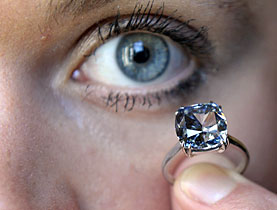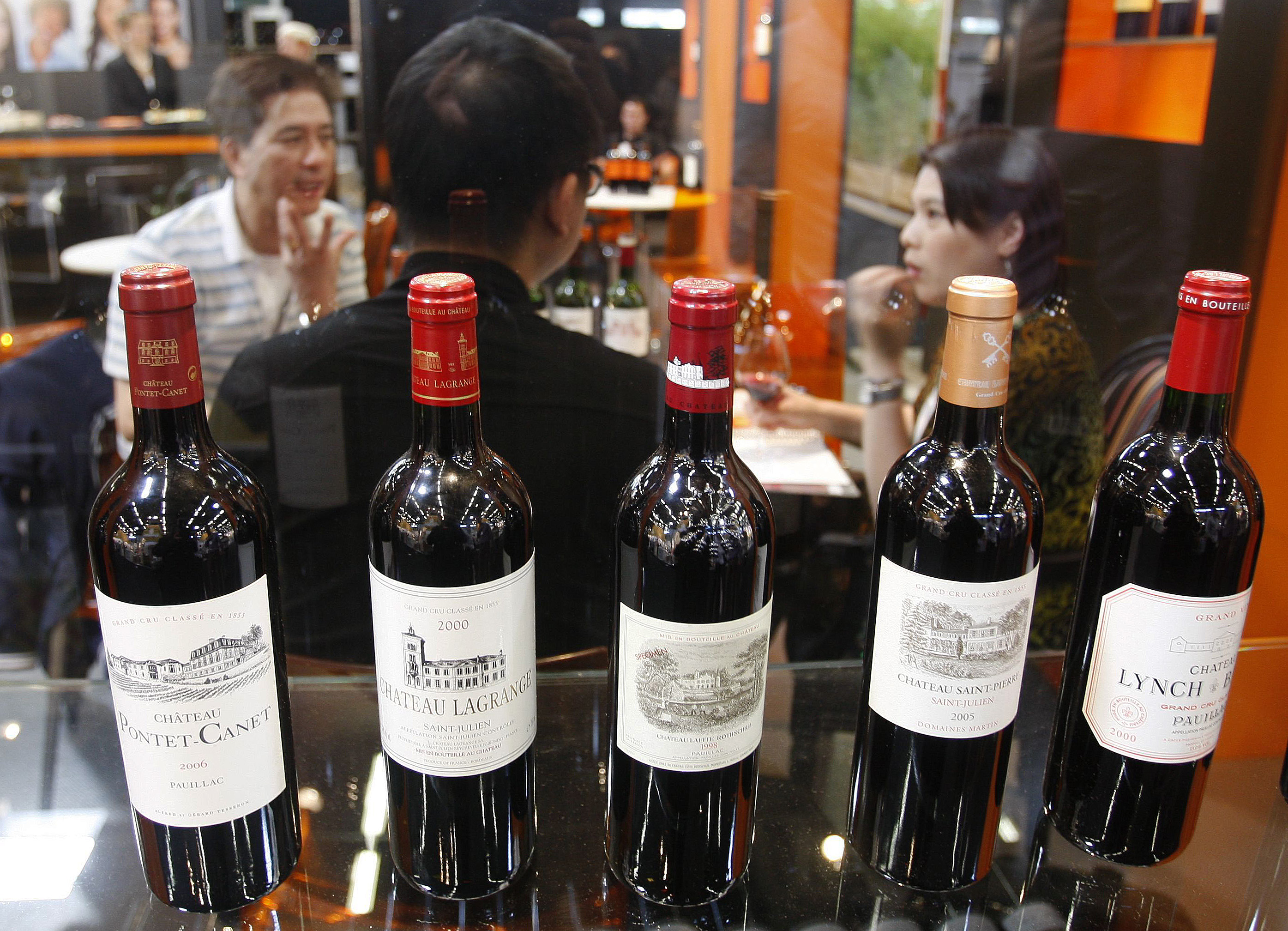Rare pink diamond smashes record

A rare pink diamond has become the most expensive stone ever auctioned, selling in Geneva for SFr45.44 million ($45.72 million) - nearly twice the previous record.
Sotheby’s said Tuesday’s buyer of the 24.78-carat “fancy intense pink” gemstone, set between small white diamonds on a platinum ring, was British diamond dealer Laurence Graff.
Four bidders had competed for the stone, which had been predicted to fetch between SFr27 and 38 million.
The previous record had been set by rival auctioneers Christie’s, when they sold the blue 35.56-carat Wittelsbach-Graff Diamond for $24.3 million in 2008.
“Tonight’s spectacular result demonstrates that truly extraordinary objects will bring truly extraordinary prices,” David Bennett, chairman of Sotheby’s jewellery department in Europe and the Middle East, said after the sale, quoted by a Sotheby’s press release.
He said it fully deserved the exceptional price of SFr45,442,500.
Off the scale
“We live in a world of superlatives where everything is the rarest, the best or the finest, but in my experience of 35 years this is the greatest pink diamond I’ve ever seen,” Bennett told swissinfo.ch earlier.
He described pink diamonds of 24 carats as “off-the-scale” of rare.
“Pink is arguably the most desirable of all the colours of diamonds and a stone of this size never appears on the open market.”
The record price was likely to have been driven up due to several other factors.
The rectangular pink gemstone, which was last sold by New York jeweller Harry Winston 60 years ago, has a classic emerald cut with gently rounded corners and may be graded internally flawless after polishing.
Diamonds are formed over millions of years deep beneath the earth and are only forced near the surface during volcanic activity.
Blue diamonds owe their distinctive colour to the presence of the chemical element boron during the stone’s formation. Pink diamonds are thought to be created by a distortion in the crystal lattice which causes light to be absorbed differently, explained Bennett.
Strong market
Diamonds and other rare gemstones are fetching strong prices, buoyed by online bidders joining the international jewellery market, said the British expert.
“The market is very strong indeed if you look at the results. We had our best sale ever in Hong Kong last month,” he said, noting it netted $54 million.
“The whole year has been fantastic with low percentages of unsold lots. We’ve had large growth in the number of bidders and buyers. There’s no question the internet is expanding our client base rapidly,” he said.
Christie’s sold a pink diamond of just five carats in Hong Kong in December 2009 for nearly $10.8 million, still a world auction record price per carat for a diamond and for a pink diamond, according to the auction house.
The superrich with significant disposable wealth are seeking places to keep spare cash safe. In addition to gold, jewels and unique objects of art are considered attractive investments when currencies are sinking.
“There’s this idea that there’s going to be inflation eventually,” Martin Rapaport from Diamond.Net told Associated Press. “It’s not that the diamonds are necessarily going up, but that the dollar is expected to go down.”
There is also the attraction, for some, of being able to easily move $25 million around the world, he said.
Convenient gem centre
Over the past few years Geneva’s reputation has grown as a centre for spectacular jewellery sales, in particular large gemstones.
“In the past five years Geneva has outperformed New York and Hong Kong but they are catching up. Geneva is very convenient for our Middle Eastern and Russian clients, and the freeport facility is a huge help,” said Bennett.
Tuesday’s auction of Magnificent Jewels itself set a world record, fetching a total of SFr103,421,800, well above expectations. The previous record for a jewelry auction was SFr102,824,730, set at Sotheby’s in Geneva in 1993.
In May 2009 Sotheby’s sold a 7.03-carat fancy vivid blue diamond for SFr10.5 million, the highest price paid per carat for any gemstone at auction at that time.
In November 2007, Sotheby’s in Geneva sold a huge, flawless brilliant-cut white diamond, weighing 84.37-carats, for SFr18.2 million ($16.21 million) to Guess Jeans founder Georges Marciano.
The diamond achieved a world record price per carat for a white diamond ($191,980), and was the second-most expensive stone ever sold at auction, only eclipsed by the 100.10-carat “Star of the Season” diamond, which the same Geneva branch sold for $16.5 million in May 1995.
Historically, the most famous pink diamonds have come from India. Of these, pride and place must be given to the rectangular, step-cut Darya-i-Nur (Sea of Light), which is estimated to weigh between 175 and 195 carats. It is the principal gem in the Crown Jewels of Iran and together with the Nur ul-Ain (Light of the Eye), an oval brilliant of around 60 carats, once constituted the major part of the Great Table diamond.
Another historic Indian diamond is the Agra which weighs just over 32 carats. Its early history links it with Babur, the first of the Mogul rulers. Later it came into the possession of the eccentric Duke of Brunswick, one of the 19th century’s most important collectors of unusual diamonds. The Agra was sold at auction in London in 1990.
The Hortense, weighing 20.53 carats, is a somewhat flat, rectangular-shaped diamond which was listed in the 1691 inventory of the Crown Jewels of France. The stone is now in the Louvre collection
The cushion-cut Princie diamond, weighing 34.64 carats, may formerly have been part of the State jewels of Turkey. In 1960 it was sold at an auction in London.
The most celebrated pink diamond is the Williamson. The rough stone was found in the Williamson Mine, situated near Mwadui in Tanganyika (now Tanzania) in October 1947. John Williamson, the discoverer and owner of the mine, was an ardent Royalist and gave the diamond as a wedding present to the Queen, then Princess Elizabeth.
Edited text by Ian Balfour from Sotheby’s catalogue

In compliance with the JTI standards
More: SWI swissinfo.ch certified by the Journalism Trust Initiative















You can find an overview of ongoing debates with our journalists here . Please join us!
If you want to start a conversation about a topic raised in this article or want to report factual errors, email us at english@swissinfo.ch.